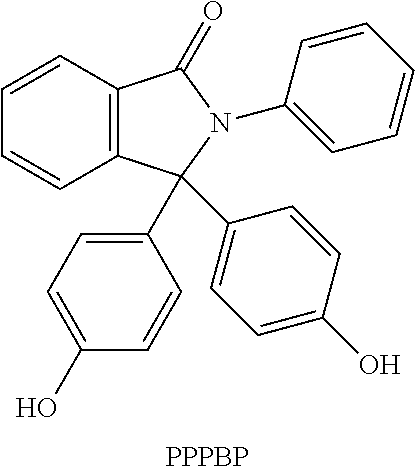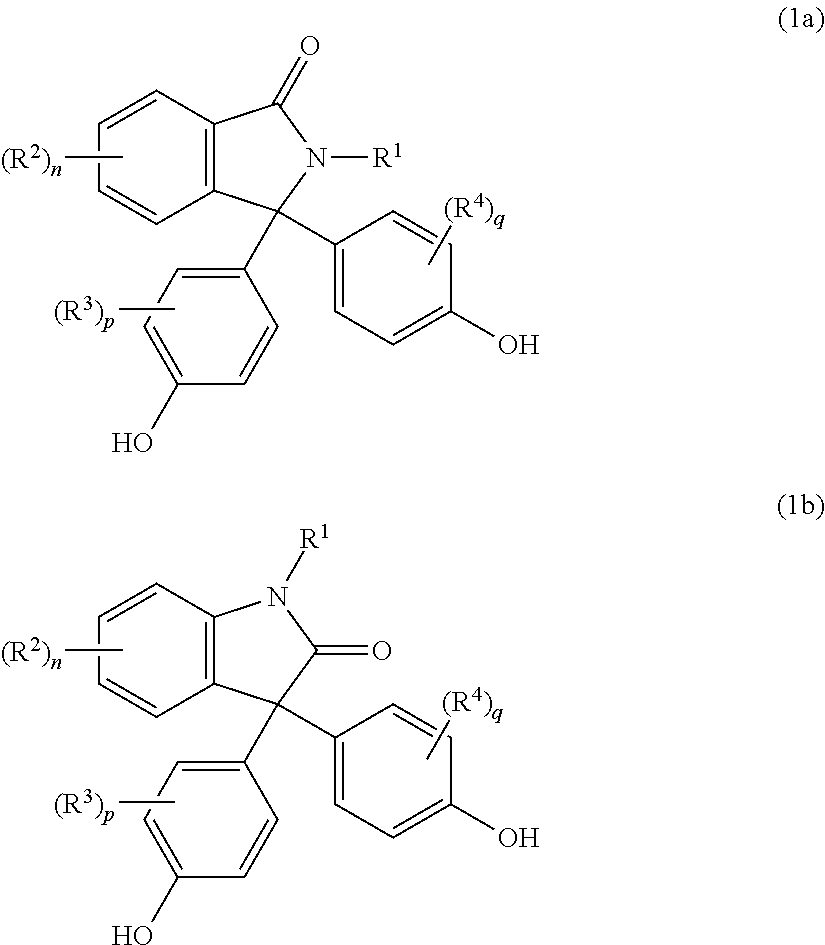Process to prepare high heat polycarbonates
- Summary
- Abstract
- Description
- Claims
- Application Information
AI Technical Summary
Benefits of technology
Problems solved by technology
Method used
Image
Examples
example 1
or Making 30-70 m % PPPBP / BPA Copolymer (pH=8-10)
[0065]A PPPBP / BPA copolymer was prepared using a co-feed process. PPPBP powder was dissolved in a 33 wt % caustic solution and demineralized water to form a solution that is 25 wt % PPPBP and the caustic added was 2.1 mol / mol PPPBP on a dry basis. In a separate formulation tank, BPA powder was slurried in a two phase mixture containing methylene chloride, water and sodium gluconate, 0.0008 pound / pound (lb / lb) polymer dry basis, added as chelating agent. The quantity of solvent added targets a 15 wt % solids in organic phase at the end of the reaction while the quantity of water added targets 16 wt % salts, NaCl and Na2CO3 included, in aqueous phase at the end of the reaction. The slurry was then transferred from the formulation tank to the reactor. Catalyst, e.g. TEA, was added to the reactor in the range of 0.5 to 2 mol % of total monomer—BPA and PPPBP. Phosgene gas and PPPBP solution were cofed to the reactor in a specified ratio. P...
PUM
| Property | Measurement | Unit |
|---|---|---|
| Temperature | aaaaa | aaaaa |
| Fraction | aaaaa | aaaaa |
| Fraction | aaaaa | aaaaa |
Abstract
Description
Claims
Application Information
 Login to view more
Login to view more - R&D Engineer
- R&D Manager
- IP Professional
- Industry Leading Data Capabilities
- Powerful AI technology
- Patent DNA Extraction
Browse by: Latest US Patents, China's latest patents, Technical Efficacy Thesaurus, Application Domain, Technology Topic.
© 2024 PatSnap. All rights reserved.Legal|Privacy policy|Modern Slavery Act Transparency Statement|Sitemap



